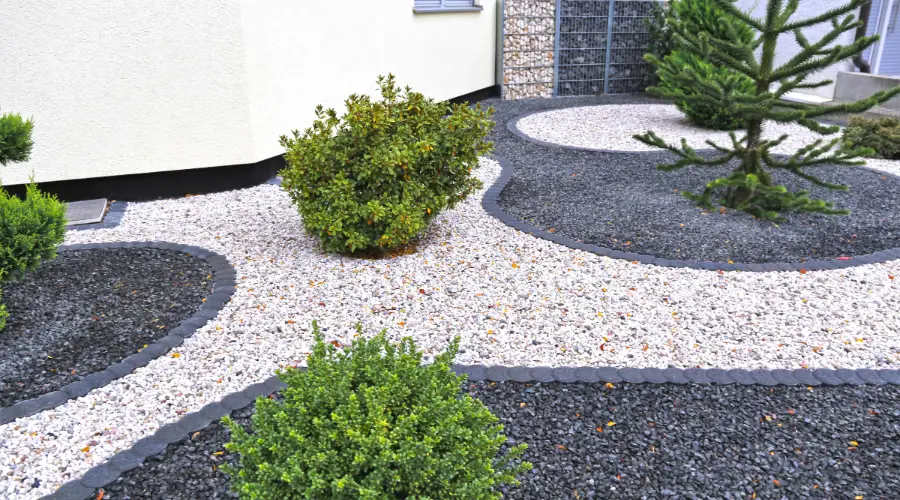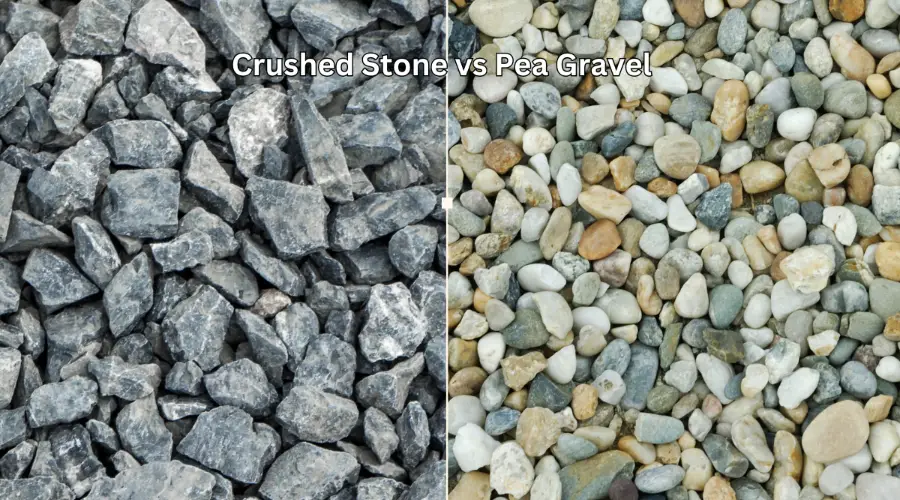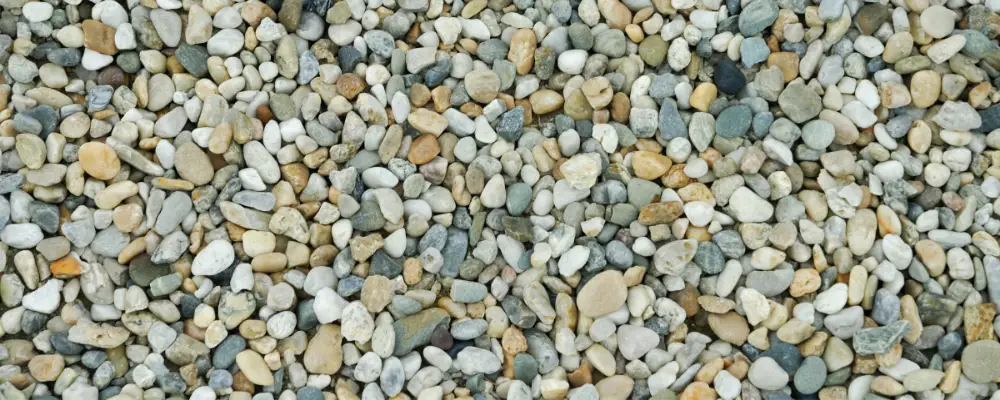Pea gravel is a wonderful choice for individuals who want to reset their landscapes. It is the best aggregate for building projects as well. Due to its aesthetic properties, the most common option for homeowners is pea gravel. It can be easily confused with crushed stones. Pea gravel is a popular and adaptable material used for construction and landscape tasks.
In this article, we will discuss the manufacturing process, functions, uses, installation, and maintenance of pea gravels to help you make informed decisions.
What is Pea Gravel?
The other name of pea gravel is pea stone gravel, which is well-known for its tiny, round, smooth stones and provides both practical and decorative advantages. This gravel is easy to mix with different design concepts because it comes in a variety of colours. Garden beds, roads, and walkways can be made by using pea gravel because of its economical rate and reliability. In addition to this, water pooling and soil erosion can be reduced by using this pea gravel due to its effective drainage properties.
How is Pea Gravel Made?
Natural Process:
Gravel forms naturally through the weathering and erosion of rocks by wind, water, ice, and temperature changes. These forces break rocks into smaller fragments, which accumulate in rivers, streams, or on the surface over time. Wind polishes rocks like sandpaper, water breaks them apart with pressure, and glaciers grind them into smaller pieces as they move, creating gravel deposits in their path.
Industrial Process:
Exploration and Mining: The initial stage in producing industrial gravel is open-pit or quarry mining. Huge volumes of rock are removed using large machinery. These materials are then sent to processing facilities for further refining.
Crushing Process: At the facilities, strong machinery with hammers or jaws is used to crush big rocks. In order to prepare the rocks for sorting, these machines break them up into tiny pieces.
Sorting and Screening: Following crushing, the pieces are sorted to separate particles of different sizes. This guarantees that the gravel satisfies the exact specifications needed for landscaping and building applications.
From mining to processing, every step shows the cutting-edge technology and effectiveness required to create premium gravel fit for a range of uses.
The Function of Pea Gravel
Pea gravel, which is usually ½ inch or smaller, is among the tiniest gravels. It is frequently utilised in swimming pools, pathways, fish tanks, and other locations where foot traffic is present or fine gravel is required. Establishing clear limits and edges for the gravel is crucial when utilising pea gravel. It spreads out rapidly due to its small size unless it has a distinct edge.
Uses of Pea Gravel

Pea gravel is usually utilised for more above-ground projects and applications due to its size, texture, and colour. Pea gravel is a popular choice for accent gardens and flower beds among construction and house owners. Pea gravel may either stick out from the vegetation or blend in with the landscaping thanks to its variety of colour variations. Because of its smooth appearance, pea gravel is also commonly used for patios, pet runs, playgrounds, paths, and many other places with heavy use. Pea gravel can be used for subterranean constructions like pipe bedding and drainage, just like crushed stone. When searching for aggregate for fence post installation, it’s also a wise option.
Knowing how pea gravel’s size can affect a project is crucial when thinking about it. If pea gravel is not correctly edged, it will slide easily due to its small size. Make sure you have landscape trim or concrete blocks ready to hold the pea gravel in place if you plan to add it to a flower bed or walkway. It’s also crucial to remember that pea gravel retains heat, which some plants may find harmful. If you want to use pea gravel in a garden or flower bed, choose plants that can thrive there, such as Spanish poppies, evergreens, and thyme.
Cost and Maintenance of Pea Gravel
Pea gravel costs between 2,100 and 5,200 per cubic yard, or 1,400 per tonne. The cost may increase depending on factors like shape, size consistency, and natural colours like rusted tones.
How Much Is Required?
About 108 square feet and 6 inches deep, a cubic yard is perfect for patios or walkways.
Materials for a 500-square-foot patio could cost anywhere between Rs. 5,250 and Rs. 26,000.
Gravel Volume Calculation
- Calculate the cubic inch volume:
The gravel depth is multiplied by the project’s width and length in inches.
- Calculating Gravel Volume
- Find the volume in cubic inches:
Multiply the gravel depth by the project’s length and width in inches.
For instance, if the patio is 10 by 10 feet and has 2.5 inches of gravel:
2.5 inches × 120 inches × 120 inches = 36,000 cubic inches
- Convert to cubic feet:
Multiply by 0.000579.
36,000×0.000579=20.8cubic feet.
- Convert to cubic yards:
Multiply by 0.0000214.
36,000×0.0000214=0.77cubic yards.
- Options for Edging
In addition to improving appearance, a boundary stops gravel from spreading. Among the options are:
Blocks of stone are stacked for a smooth finish. Edging made of metal or plastic is an inexpensive and simple option.
The price of installing edging
Installing stone professionally costs between Rs. 1,000 and Rs. 3,200 per linear foot.
The starting price for DIY plastic edging is Rs. 270 per linear foot.
Pea gravel’s low care needs make it the perfect choice for time-constrained homeowners or property managers looking to save landscaping costs. Unlike lawns or gardens, it doesn’t require fertilisation, mowing, or watering.
How to Install Pea Gravel?
Procedures for Laying and Preparing Pea Gravel
- Dig the patio or pathway portion to a consistent 6-inch depth using a shovel.
- Smooth the trench’s walls and edges with a spade that has a square edge. Make sure the trench is level and well-shaped if you plan to add edging.
- As a foundation, apply a 2-inch layer of crushed stone. Make it more even and drain better by raking it out.
- Cover the space with landscaping fabric to keep weeds out.
- Secure with staples at each foot and overlap the borders of the fabric by at least 2 inches.
- To keep gravel in place, add stone, metal, or plastic edging.
Crushed Stone vs. Pea Gravel

| S.No | Features | Crushed Stone | Pea Gravel |
| 1 | Size and Shape | Sizes range from 3/8” to 4”. Shapes are irregular with sharp, rough edges. | Typically 3/8” in size. Rounded, smooth edges. |
| 2 | Texture | Rough and coarse to the touch. | Softer and smooth to the touch. |
| 3 | Colour Options | Mostly neutral hues like white or grey. | Offered in a range of shades, including vivid (red, blue) and neutral (brown, grey). |
| 4 | Primary Uses | Perfect for subterranean projects such as huge roads, drainage, pipe bedding, backfill, and concrete sub-base. | Ideal for projects that are above ground, like flower beds, patios, dog runs, playgrounds, and sidewalks. |
| 5 | Decorative Potential | Less decorative; more functional due to neutral tones and rough texture. | Highly decorative with a smooth texture and vibrant colour options. |
| 6 | Stability | Stable due to sharp edges, making it ideal for tamping or rolling for driveways and subbase applications. | Less stable without edging; prone to shifting. |
| 7 | Heat Retention | Does not significantly retain heat. | Retains heat, which may affect plant health in garden applications. |
| 8 | Cost | Typically less expensive, depending on type and availability. | May be costlier, especially for higher-quality, colorful varieties. |
| 9 | Best Applications | Subbase for concrete, backfill, large driveways, drainage solutions, and railroad ballast. | Playgrounds, dog runs, flower gardens, patios, walkways, and certain drainage requirements. |
Conclusion
Pea gravel is a versatile and reasonably priced landscaping material that offers both practical and visual benefits. Its smooth texture, variety of colours, and small size make it ideal for patios, flower beds, and walkways. Pea gravel is also a low-cost, long-lasting choice for many projects since it requires no upkeep and offers superior drainage. For many homes, the advantages outweigh the potential need for appropriate edging to stop movement. All things considered, pea gravel is a great option for both ornamental and practical landscaping requirements.
FAQ’s
Pea gravel has drawbacks such as messiness, instability, and weed growth, despite being excellent for drainage and soft underfoot
Pea gravel is versatile and ideal for various landscaping projects. It can be used to design a beautiful patio, a peaceful walkway, or a welcoming fire pit. Additionally, it serves as an excellent decorative mulch for garden beds or as a weed-reducing layer under larger stones.

